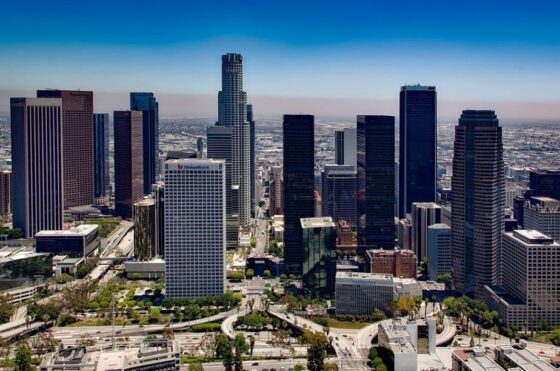By Ana Brown
 A new and interesting research explores how much the face of immigration has changed, and with it, changed the United States, and how much more it will do so by 2065. Here bellow read the synthesis and some of the key findings since the 1964 Immigration Act and Nationality Act to now.
A new and interesting research explores how much the face of immigration has changed, and with it, changed the United States, and how much more it will do so by 2065. Here bellow read the synthesis and some of the key findings since the 1964 Immigration Act and Nationality Act to now.
Over 60 million immigrants have arrived in the U.S. since 1965 (* data of 2022), and accounting for deaths or those who have left, 43 million of them live here now. When their children and grandchildren are included, these immigrants added 72 million people to the nation’s population, accounting for 55% of population growth from 1965 to 2015. Immigrants and their descendants are projected to account for 88% of the population increase over the next 50 years.
Since 1965, immigrants and their descendants have changed the country’s racial and ethnic markup. In 1965, the population was 84% white, 11% black, 4% Hispanic and 1% Asian. The black share of the population has stayed steady since then, but Hispanics are now 19.1% of the population and Asians are 6%, while the white share of the population has fallen to 62%
- 10 Cities with the Most Hispanics:
1) New York City (NY)
2) Los Angeles (CA)
3) Houston (TX)
4) Santo Antonia (TX)
5) Chicaco (Illinois) I
6) Phoenix (ARi)
7) Dallas (TX)
8) El Passo (TX)
9) San Diego (CA)
10) San Jose (CA)

California has 3 cities in the Top 10 list with the most Hispanics. Los Angeles (photo) is in second place
Americans have mixed views on the impact immigrants have had on American society. Some 45% of adults say immigrants in the U.S. are making American society better in the long run, while 37% say they are making it worse. The U.S. public’s views vary when asked about some key aspects of American life. The most negative view of the impact of immigrants is on the economy and crime, where half of Americans say they are making things worse. It’s a different story when it comes to immigrants’ impact on food, music and the arts: About half say they’re making things better.
There has been a shift since 1970 in the parts of the world sending the most immigrants to the United States – from Europe to Latin America to Asia. In 1970, the largest group of immigrants who had arrived within the previous five years were from Europe, continuing the trend of previous immigration waves. By 2000, almost half of newly arrived immigrants were from Central and South America (including 34% from Mexico alone). As immigration from Mexico slowed down significantly in the 2000s, Asians came to make up the largest group of new immigrants beginning around 2011, and projections indicate that will still be the case in 2065.
Today’s immigrants are more dispersed across the United States than they were in 1970. After the passage of the 1965 law, newly arrived immigrants increasingly settled in California, New York, Texas and Florida. By 1980 over half of those who arrived within the previous five years had settled there and, by 1990, nearly two-thirds had. But starting in the 1990s, new arrivals began to settle in less-traditional immigrant states, and by 2013, half of new arrivals chose to live in areas other than these big four magnet states.
Today’s immigrants are better educated than those of 50 years ago. Compared with their counterparts in the past, a larger share of recent immigrants in 2013 had a high school diploma, a college degree or an advanced degree, and a smaller share had less than a ninth-grade education. Compared with U.S.-born adults, recent arrivals are less likely to have finished high school, but they are more likely to have completed college or to hold an advanced degree.
A near-record 13.9% of the U.S population today is foreign born, with 45 million immigrants residing here. This compares with 5% in 1965, when the immigration law was changed. The current share of the population that is foreign born is only slightly below the record 14.8% that was seen during the waves of European-dominated immigration in the late 1800s and early 1900s. This foreign-born share is projected to rise to 17.7% in 2065 as immigration continues to drive U.S. population growth.
* The research was produced by Anna Brown, a research assistant of Pew Research Center focusing on Hispanic, social and demographic trends













